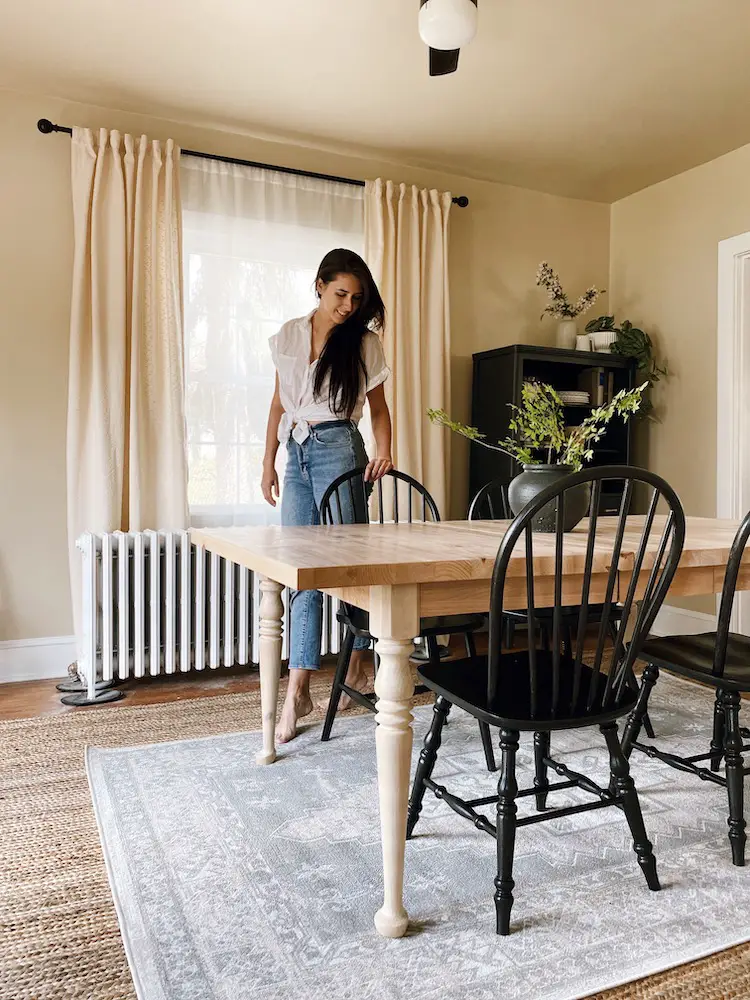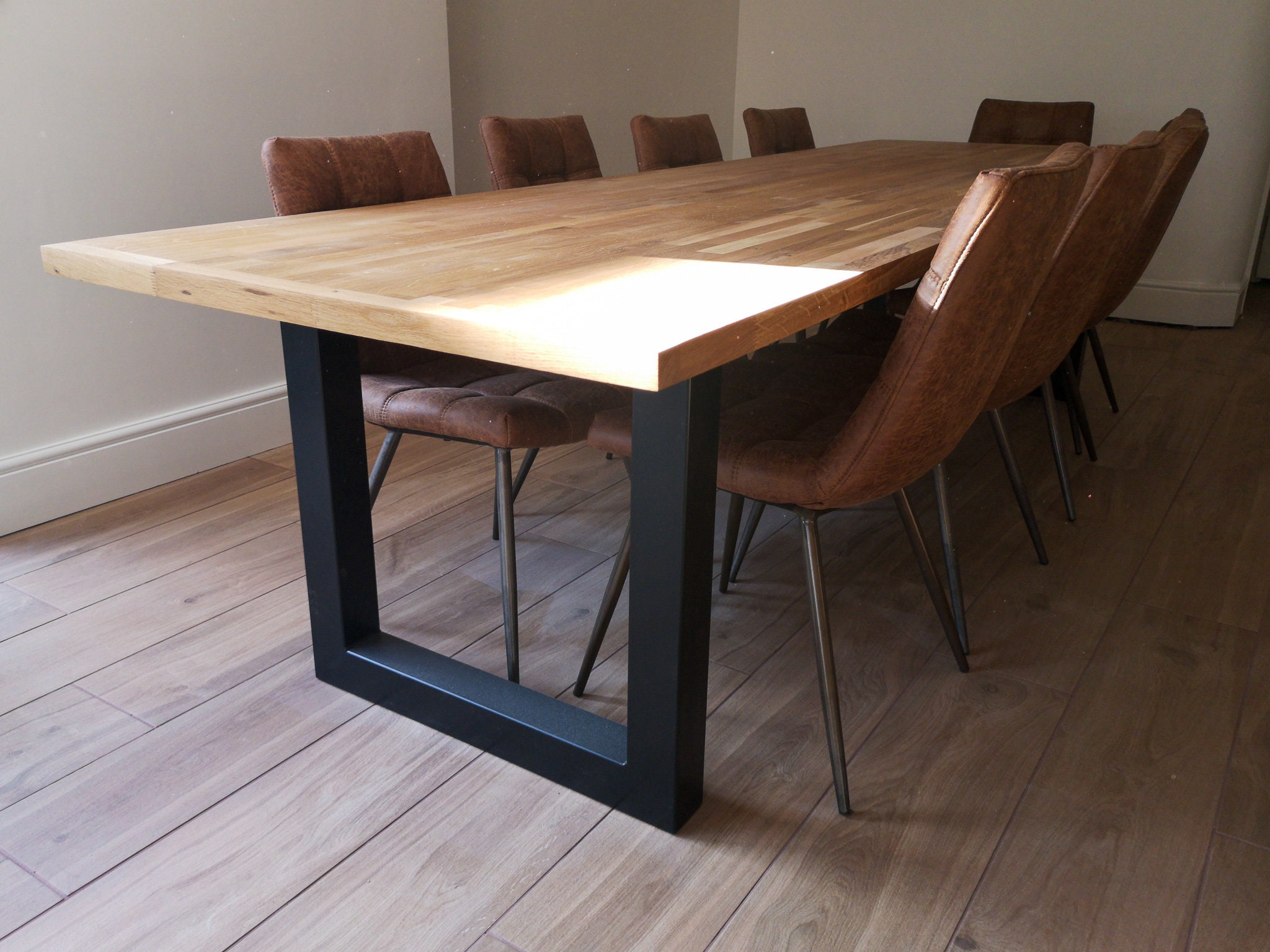Picking the Perfect Eating Table: What Styles Work Best for Your Home?
Picking the optimal dining table for your home can be a nuanced procedure that balances appearances and performance. Whether your space leans in the direction of traditional sophistication, modern minimalism, rustic beauty, or commercial trendy, the variety of designs readily available can satisfy varied tastes. Each style offers one-of-a-kind benefits and difficulties that can either boost or disrupt your eating location's harmony. Recognizing how different products, shapes, and sizes connect with your existing decor is vital. To navigate these options properly and find a table that genuinely complements your home, think about the adhering to aspects thoroughly.
Examining Your Room
Reviewing the dimensions and layout of your dining area is a vital initial action in picking the excellent table. Begin by measuring the length and width of the room, accounting for doorways, windows, and other architectural features that could influence table positioning. This ensures that your table not only fits but also allows for comfy activity around it.
Take into consideration the variety of people you generally captivate. A table ought to accommodate your household's daily demands while supplying sufficient adaptability for periodic visitors. Generally of thumb, designate at least 24 inches of table width per person to make certain a comfy eating experience.
It's likewise vital to maintain appropriate clearance around the table. Preferably, there must go to least 36 inches between the table edge and walls or various other furniture, enabling easy access and activity. For rooms where chairs with arms or added storage space systems like buffets are included, enhancing this clearance to 48 inches is a good idea.
Lighting and ambience play considerable roles. Make certain that your table aligns with existing lights fixtures or strategy for appropriate lighting solutions. This extensive spatial evaluation assurances that your table not only fits literally however also balances with your room's general functionality and visual.
Popular Table Styles

Standard eating tables commonly feature ornate details, bent legs, and abundant wood finishes, evoking a feeling of ageless beauty. They are ideal for homes with classic style or those aiming to include a touch of elegance to their dining location.
Modern dining tables prioritize simpleness and tidy lines, typically incorporating products like glass and steel. These tables are optimal for contemporary rooms, supplying a sleek and clean look that enhances minimalist layout approaches.
Rustic dining tables, on the various other hand, highlight natural products and a handcrafted look - dining room table legs. They typically feature redeemed wood and a troubled surface, developing a warm and welcoming environment. These tables work well in farmhouse-style homes or those looking for a cozy, natural feel
Industrial eating tables combine resources such as metal and timber, frequently showcasing a practical aesthetic. This design is well-suited for lofts or city areas, including a touch of rugged beauty and sturdiness to the eating experience.
Each style supplies distinct benefits, making it essential to select one that straightens with your home's general layout and your personal preferences.
Product Choices
When choosing an eating table, the choice of material plays a crucial function in establishing both the table's looks and performance. Timber, metal, glass, and composite materials each deal one-of-a-kind benefits and difficulties, making it essential to line up the product with your home's style and lifestyle requirements.
Timber is a classic and versatile option, readily available in ranges such as oak, walnut, and mahogany. Recognized for its toughness and heat, timber complements both typical and modern insides. It requires regular maintenance to avoid scratches and warping.
Metal tables, commonly crafted from stainless-steel, light weight aluminum, or functioned iron, are commended for their modern appeal and robustness. They are particularly suited for industrial or minimal setups yet can be vulnerable to damages and might really feel chilly to the touch.
Glass eating tables bring an air of sophistication and visibility, suitable for smaller spaces as they create an illusion of even more area. While very easy to tidy, glass can be vulnerable to smudges and requires careful handling to stay clear of chips and splits.
Composite products, such as MDF and plywood, offer affordable and customizable solutions, though they might do not have the durability of natural products. Picking the ideal material ensures your eating table is both a practical possession and a visual joy.
Forming and Size Factors To Consider
After figuring out the appropriate product for your dining table, the next factor to consider is selecting the appropriate shape and dimension to match your room. Alternatively, round tables promote a feeling of intimacy and are superb for smaller dining locations, encouraging conversation by removing corners and making everybody other really feel equally included.
Dimension is just as vital and ought to be dictated by both the space's measurements and the variety of people you prepare to seat routinely. Generally of thumb, designate at the very least 24 inches of table width each to make sure comfy eating. Additionally, think about the table's clearance room: there should be at least 36 inches between the table side and the wall surfaces or various other furnishings. This ensures that diners can walk around quickly without really feeling confined. Expanding tables offer flexibility if you frequently hold larger events, supplying added seats when required without inhabiting added room daily. Picking the appropriate shape and dimension ensures both practicality and aesthetic harmony in your eating location.
Matching Your Decoration
Choosing a dining table that integrates with your existing decoration is pivotal in developing a cohesive and welcoming area. Begin by evaluating your current indoor design style, whether it be modern, conventional, rustic, or diverse. The dining table need to great site match the overall visual, not take on it. A smooth, minimal table with clean lines is excellent for a contemporary home, while a vintage, luxuriant table suits a much more traditional setup.
If your decoration includes cozy tones and all-natural products, take into consideration a wooden table to enhance the organic feel. Conversely, a glass or metal table may be much more proper in an area controlled by great shades and commercial components.
Texture plays an important function. A rough-hewn, recovered wood table can add character Get More Information to a rustic room, while a sleek marble surface area can boost a luxurious eating location. Ultimately, take into consideration the range and proportion of the table in connection to the room size and existing furnishings. A well-matched dining table not only boosts aesthetic charm but also improves the total dining experience.

Conclusion
Choosing the optimal eating table requires cautious consideration of space, style, products, shape, and size. Traditional tables enhance timeless insides with abundant wood finishes, while modern tables match modern setups with glass and metal.